For me, Siberia is one of the harshest countries in the world; not only is it covered by ice and snow year-round, it also has a majestic history. However, that’s just the “tip of the iceberg”, only when i actually arrived here could i get a deeper understanding of this wonderland. Because of the extreme harshness that makes it seem impossible for anything to survive, nature becomes even more alluring, more fascinating, and siberian people get more persevering. A beautiful siberia will always remain in my mind with a lot of nostalgic memories.
[rpi]
SIBERIA: THE LAND OF NATURAL RECORDS
We should not dismiss Siberia when talking about lands with the most records in the world. With an area of 13.1 million square kilometres, Siberia accounts for 77 percent of Russia’s land area, and is approximately as large as Canada – the second largest country in the world. This land stretches across many geographical regions; it extends eastward from the Ural Mountains to the Pacific Ocean and stretches southwards from the Arctic Ocean to the hills of north-central Kazakhstan as well as to the national borders of Mongolia and China.
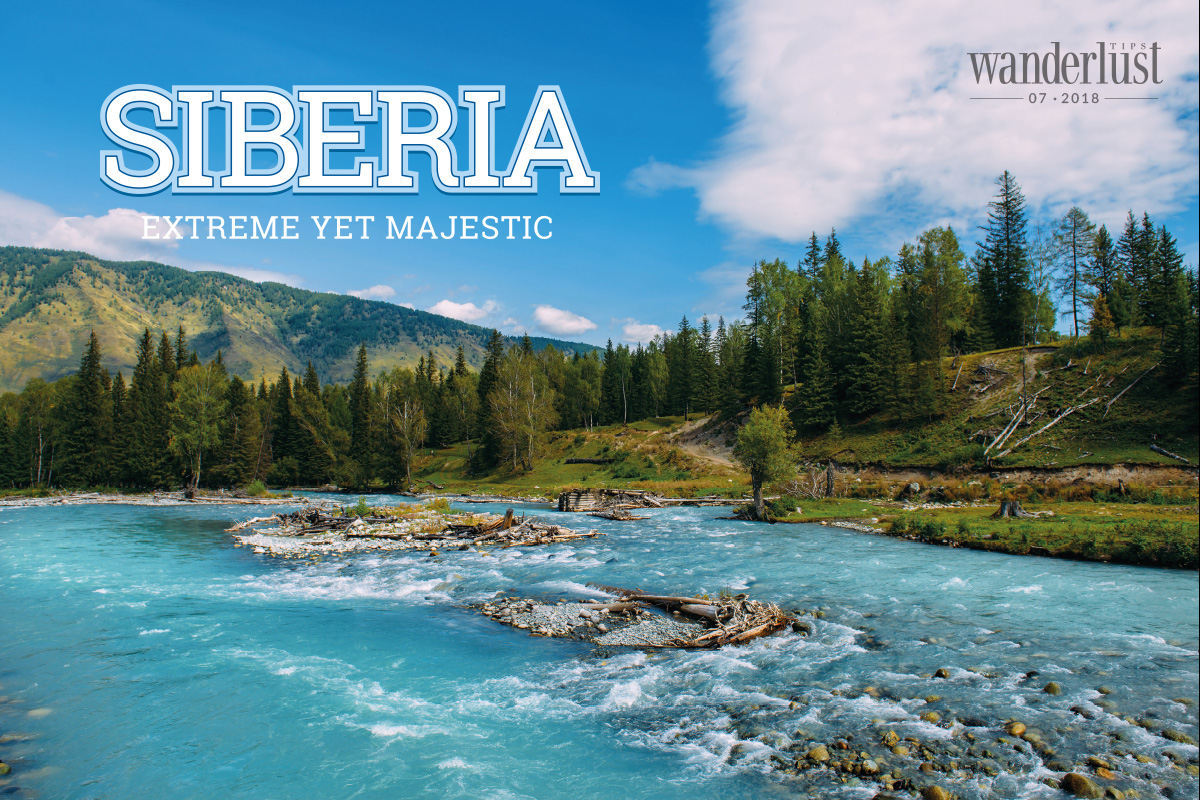
Siberia is also home to the world’s lowest population density with an average of 3 people per square kilometre. The area of Siberia is nearly 50 times larger than that of the UK, while the population is about half of the UK’s population. It is easy to understand why the population density here is low; the climate of Siberia varies dramatically at different periods of the year. The summer lasts only 1 to 3 months while the winter spans almost all year round. The average temperature of the year is about 0 degrees Celsius and the temperature difference between the two seasons may be up to 100 degrees Celsius. But the climate is mostly cold all year round; it even snowed during the summer days that I stayed here. The record temperature was -71.2 degrees Celsius in Oymyakon which is considered the coldest town in the world, while summer temperatures in some areas rise to above 35 degrees Celsius. Living in such extreme weather, herbs and many rare plants and animals still flourish and become the symbol of Siberian vitality.
In addition, Siberia holds many records, such as Lake Baikal – the world’s oldest and deepest freshwater lake, the four longest rivers in the world, or the largest swamp in the northern hemisphere.
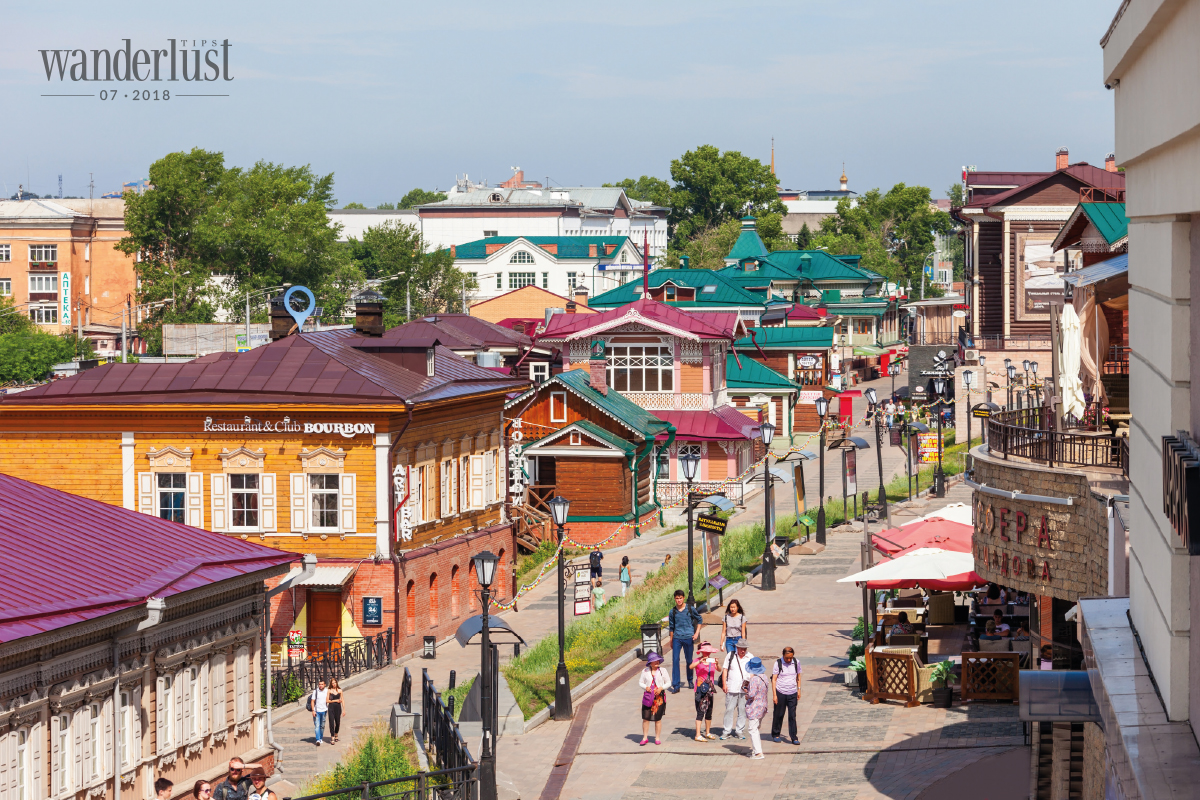
LAKE BAIKAL – A PRISTINE AND MAGNIFICENT BEAUTY
I was overwhelmed by the stunning wilderness and beauty of Lake Baikal, which features a diverse ecosystem, vegetation and terrains. For me, two of Siberia’s most fascinating natural attractions are the Taiga and Lake Baikal.
Located in the south of Siberia, the 25 million-year-old Lake Baikal is the largest, deepest, and oldest freshwater lake in the world, holding 20 percent of the world’s fresh water. Travelling on the clear vast water by a ship hanging the Russian flag, I could not help but get immersed in the fascinating story of the young guide about the lake that was recognized as a UNESCO World Heritage Site. Lake Baikal is in a rift valley, formed by the Baikal Rift Zone, where the Earth’s crust is slowly pulling apart so that every year the movement still changes the size of the lake. Scientists often refer to Baikal as a growing baby. Lake Baikal, which is 23,766 square kilometres (twice as large as Sydney, Australia) and about 1,637 metres deep, is home to more than 2,500 rare species, two-thirds of which can only be found here. Some of the rare species in Baikal include the Nerpa Baikal; the unique Golomianka with translucent bodies, females do not lay eggs, they give birth to larvae.
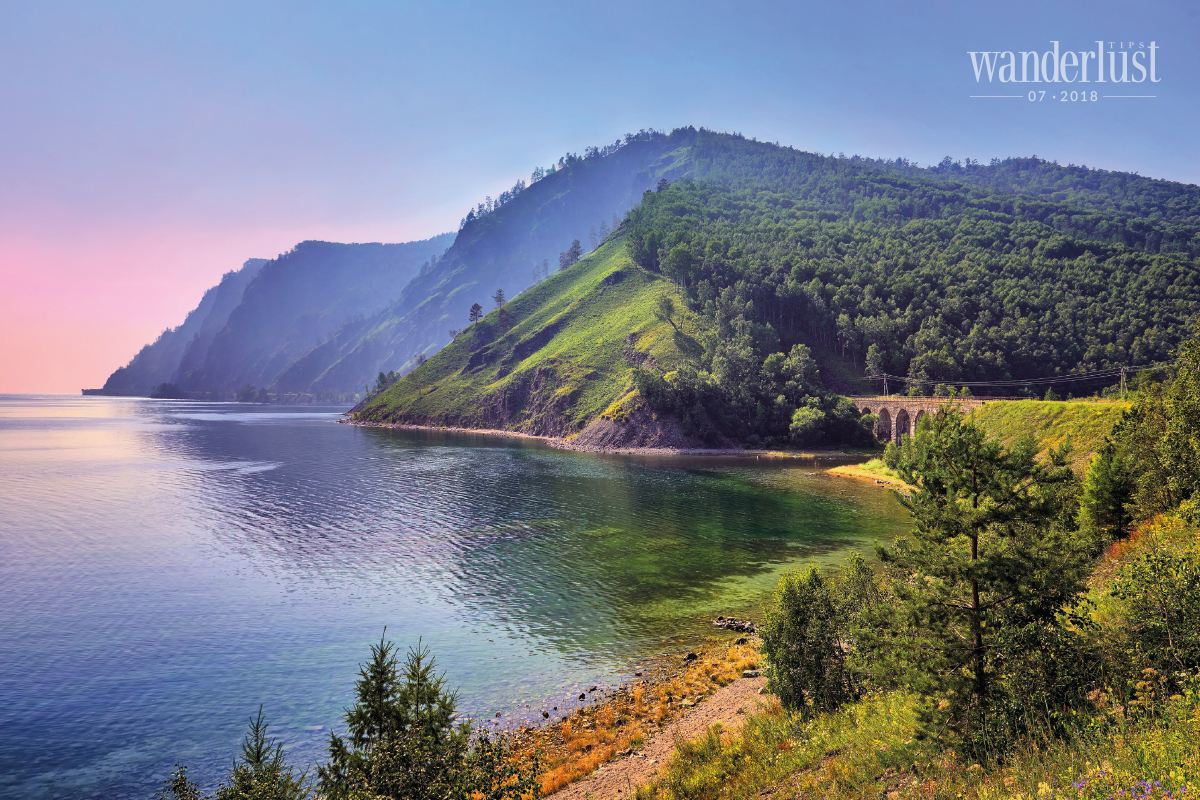
With 328 sunny days each year, Lake Baikal always puts on a breathtaking and romantic charm. The water is crystalclear as a large mirror reflecting sparkling sunshine; even scientists have discovered a phenomenon caused by small water particles lifted up from the lake surface by the pull of the moon. The average water temperature in the summer ranging between 5-10 degrees Celsius is appropriate for many types of fish and freshwater organisms. With the naked eye, you can see plants and animals at 50 metres deep.
When the winter comes, Lake Baikal bears a wonderful and extremely appealing beauty. The ice is 3 to 15 metres thick and can withstand trucks that weight tens of tons, but you can still see all the fish swimming underneath. The creatures still survive under the thick ice thanks to the ice cracks; sometimes it was up to 30 kilometres in length and 2-3 metres in width, which allows them to breathe oxygen. The ice cracks and freezing bubbles create a variety of exotic and beautiful shapes into the lake surface. When the sunlight is reflected on the ice, making the whole surface sparkle in abundance of colours, it creates a magical and gorgeous scene that is thought to be found only in Hollywood movies really happens in Baikal.
A mysterious legend about the “sacred lake” is that the lake possesses a supernatural power that can extend human life. That’s why many people are ready to immerse themselves in the water at 5 degrees Celsius in the hope of becoming immortal.
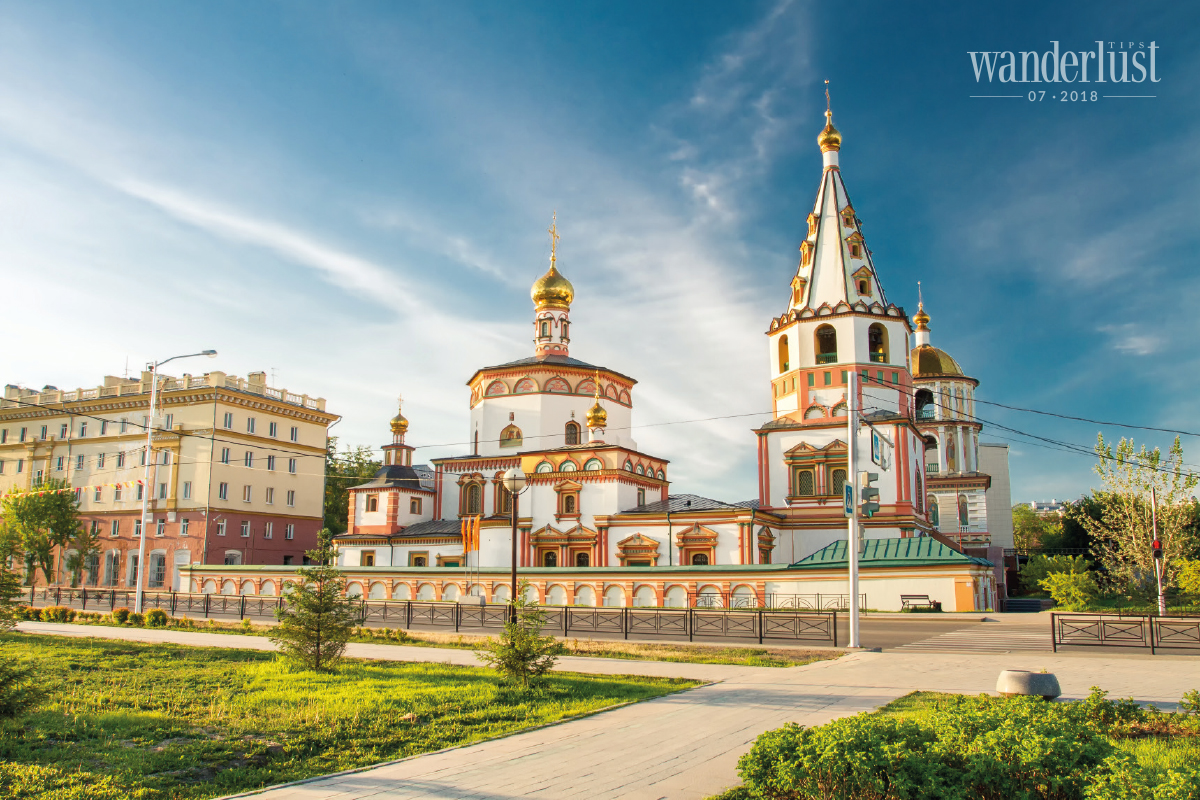
TAIGA – A VAST AND MYSTERIOUS FOREST
If Lake Baikal looks like a charming and mysterious girl, Taiga is like a tall and handsome Northern European guy. This forest has fascinated me since I learned about it through movies like “Backcountry” and “Lost”, or the famous Russian survival gameshow “Game 2: Winter.” But only when arriving here could I understand why the Taiga was called “the world’s largest biome apart from the oceans”. The forest appears vast and immense with large coniferous trees growing in rows, while on the ground there are a lot of species of lush green wild plants, moss, lichen, and some beautiful flowers. It is also possible to find some species such as birch, alder, willow, and yew, but the most popular is the pine grown in the region that features the cold winter of Eastern Siberia.
Like the typical climate of Siberia, the Taiga’s climate varies dramatically between seasons, with temperatures ranging from minus 50°C to 30°C, but in each season, Taiga has its own beauty. Summer, when the weather is warm and humid, is a chance for many species to sprout, bloom, and produce fruits after a cold winter. Autumn is the favorite time of many tourists because it is when the trees turn yellow, streams flow gently through flourishing forests, and distant mountains are somewhat covered by snow. The scenery is picturesque like the works of an artist.
Taiga is also home to a large number of animals ranging from large herbivores to small rodents. In the process of evolution, they try many ways to adapt and survive in this harsh environment. Some species try to feed in the summer to accumulate energy for long dormant periods. Others try to have a thick coat to endure the cold winter.
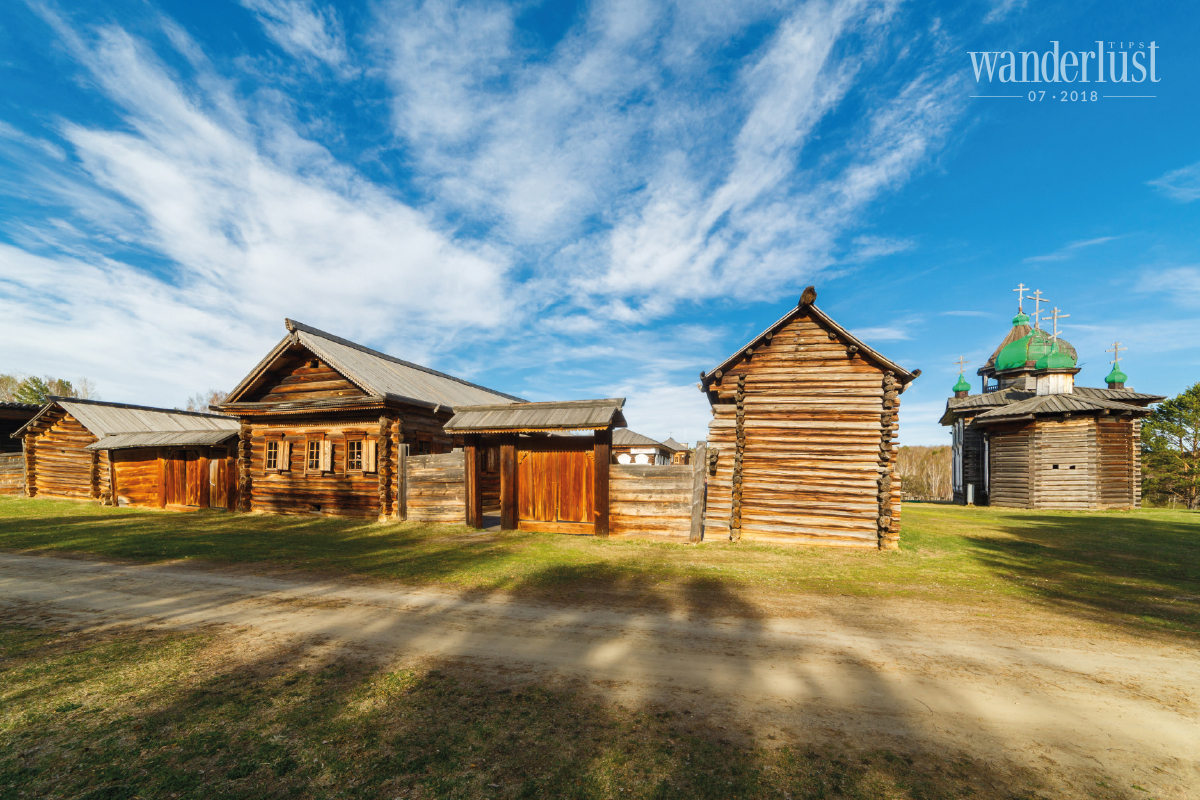
The story of Lake Baikal and Taiga was told while the ship took us to admire the nature. On riversides, looking at dense woods, rocky cliffs, and deep blue water made me feel like I was in the middle of a distant land in the fairy tales of Northern Europe.
LONG HISTORY AND CULTURAL DIVERSITY
Thanks to the extremely cold climate of Siberia, many unique archaeological relics dating back to primitive times still remain intact, enabling people to discover the mysteries of human history.
Visiting the Museum Retro Park in Listvyanka, I learned more compelling stories about the land that is thought to have been covered in ice and snow. Just a few people know that it used to be a large, rich, green land before the asteroid hit the Earth, causing the extinction of dinosaurs as well as climate and geographical changes in the world. The first people to live in Siberia were from 45,000 BC, during the Stone and Bronze Age; the area was quite crowded with ethnic people who left a lot of precious monuments and objects which are still kept in museums in Siberia and around the world.
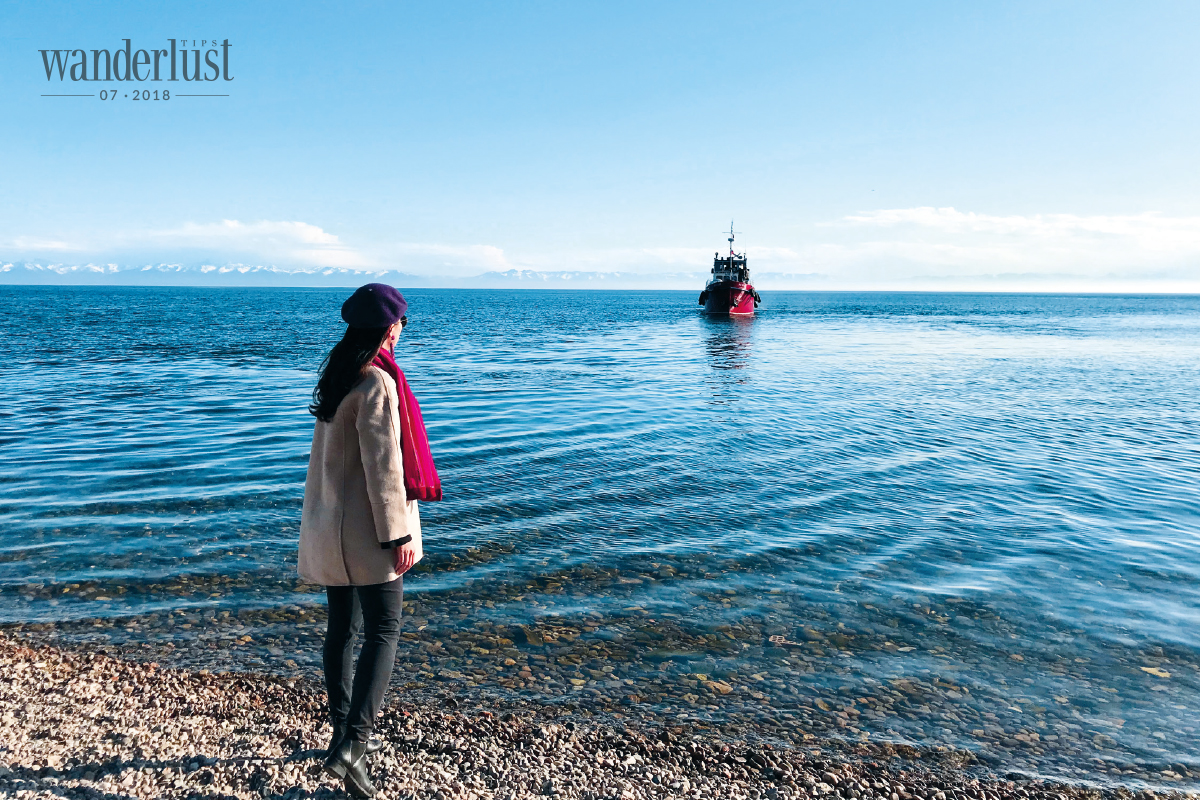
Not far from Irkutsk, the Taltsy Museum of Wooden Architecture and Ethnography is also a must-see destination for visitors. It was founded in 1966, opened in July 1980, and since then has become a popular stop on the way to Lake Baikal. There are 40 historic architectural monuments and over 8,000 different exhibitions where you can learn about the life of the Siberians over the centuries.
Siberia is a large geographic area and has a long history of development, so it used to be home to many groups of humans. The majority of them are Russians and Slavs, and mostly live in the south, along with the Trans-Siberian railway. Some Mongolian ethnic groups have lived here for a long time, and there are some other ethnic minorities such as Ket, Evenk, Chukchi, Koryak, and Yukaghir. Today, there are still a number of ethnic groups from a few dozens to several hundred people, gathering in small groups in the forest, steppe, mountains, or on the islands. Many ethnic groups are in danger of extinction like the Evenki, Tofalar, Nanai, Ulchi, Dolgan, Udege, Tazy, Uilta, and Sakha tribes.
They belong to many races, bear a lot of unique cultural features, and have their own language; they hunt and gather for living. In Siberia, I was very interested in learning the culture and habits of indigenous people. They always wear colorful clothes made from many kinds of fabrics and leather, along with elegant jewelry. They are very open, optimistic, and have high adaptability to the extreme life in Siberia.
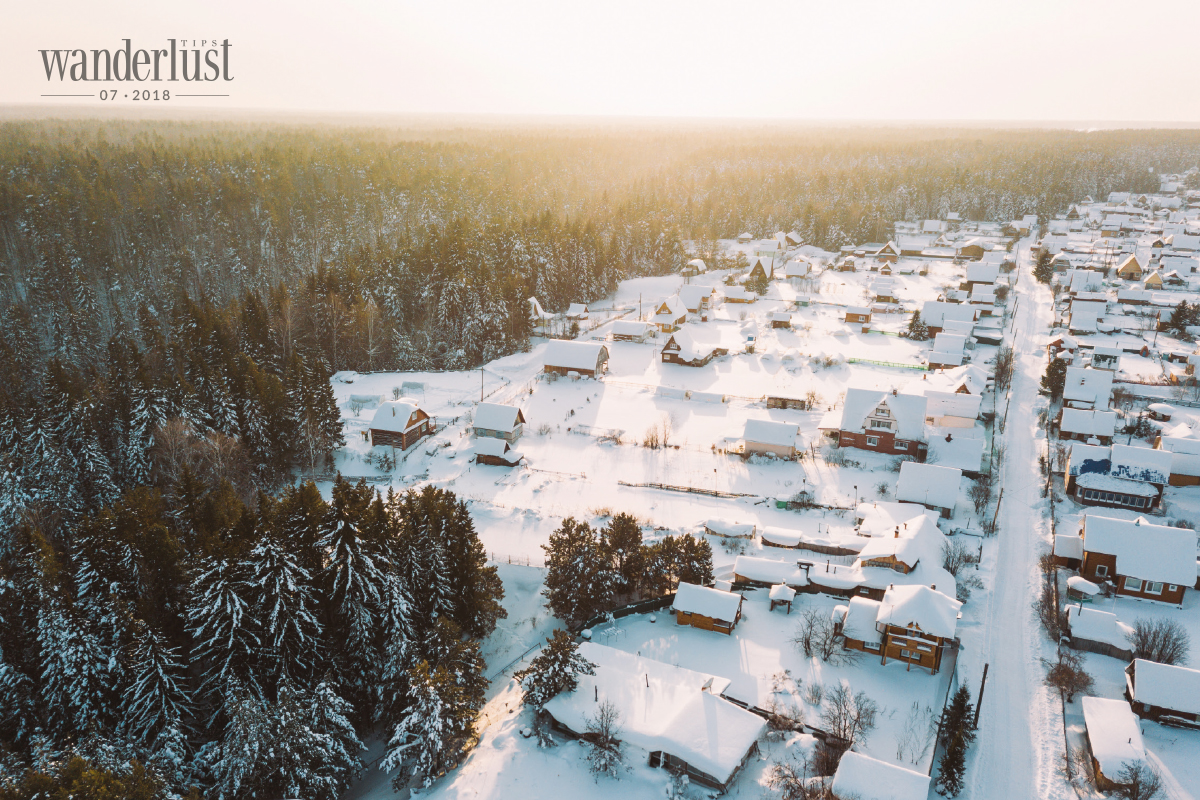
AN EPIC AND HEROIC HISTORY
Siberia was invaded, divided and occupied many times by Mongols, Chinese, and Turkistan from the 13th to the 16th centuries. In 1661, when Khanate of Sibir began to weaken, the first Cossacks from the West crossed the rivers by wooden boats to Siberia and laid the foundations for the invasion and domination of Russia to this land. Thanks to the Cossacks soldiers, the Russian army began to grow and took control over the east, then reached the Pacific coast in the mid-17th century.
The Cossacks came from the south of Eastern Europe and the Asian part of Russia, famous for their independence, military skills and more particularly, excellent horse riding abilities because they lived on the vast grasslands. They later played an important role in the peacekeeping and development of Siberia.
Siberia is also known as the land of exile where prisoners of Russian, Polish and ethnic descent were sent. In 1940, hundreds of thousands of Poles were exiled to the labor camps and the “Gulag Prison” in Siberia by carriages packed with people; they had to walk on foot to freezing cold land. Many said that only one-third of the Poles survived and arrived in Siberia to continue the harsh life here. Besides doing forced labor and enduring hard life, they also had to cope with the harsh weather and confronted countless dangers from the Taiga. Wild animals, blood-sucking insects, or poisonous plants could have taken their lives anytime.
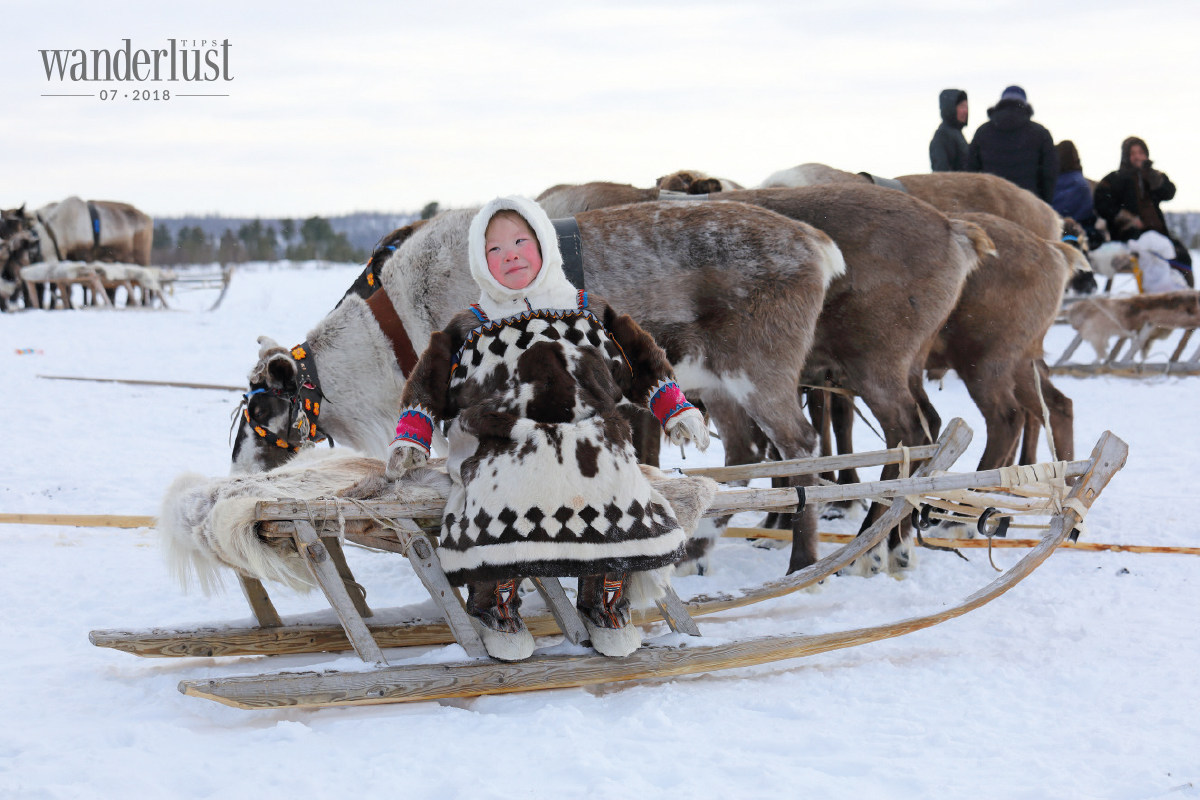
Referring to the exile of Russian prisoners, it related to the event of Decembrist revolt 1825 – a protest against Tsar Nicholas I’s assumption of the throne. After the failure of this spontaneous uprising, 121 nobles and relatives of the royal family who joined the protest were banished to Siberia. It was a time of suffering in Siberia which taught many Russian intellectuals their sense of perseverance to survive which also created new occupational opportunities which contributed to building a new life in Siberia.
Today, there are many museums, churches, prisons, historical monuments, and heroic stories handed down through generations. Inspiring stories of those who were exiled but still strived to exploit and develop the land of grief, left me in admiration of the Siberian’s desire to live. They have motivated and inspired me to continue living, working, exploring, and conquering a life which seems to be so hard yet still full of hope and belief in a good and promising future.
W. TIPS
Visa
There are many types of visa to enter Russia, but the most typical one for tourists is the popular visa. You will need an invitation letter from licensed travel companies or hotels, who will send the visa application to the Embassy of the Russian Federation in Hanoi and Consulates General of Russia in Ho Chi Minh City and Da Nang. The visa fee is VND460,000per person and VND920,000per person.
Transportations
The fastest and most economical way to travel from Siberia to Vietnam is flights with transit in Bangkok, Thailand. There are many low-cost flights from the cities of Vietnam to Bangkok. S7Airlines offers direct flights from Bangkok to Irkutsk with reasonable ticket prices. You can fly from other countries to Irkutsk; it is also very convenient to travel from here to other cities in Siberia. This city has two airports: Irkutsk International Airport and Irkutsk Northwest Airport.
Visit
Siberia is very large; you will need a planned itinerary to visit each region. Some must-visit attractions are Lake Baikal, Taiga, and Altay Mountains. Irkutsk is the most developed and fascinating city in Siberia. You should take a city tour to visit the parks, museums, and exhibitions such as Listvyanka, Taltsy, or beautiful architecture and especially the churches such as Kazanskaya, Epiphany. You should also try Siberian cuisine at restaurants and cafés.
Shopping
Big cities like Novosibirsk and Irkutsk all have shopping malls and many local markets where you can buy souvenirs. You should buy scarves, leather products, clothes, handicrafts, and jewelry made by ethnic minorities. They are relatively cheap compared to other tourist cities, ranging from VND500,000to more than VND1,000,000.
Wanderlust Tips

